
Bigfoot, also commonly referred to as Sasquatch, is a large and hairy human-like mythical creature alleged by some to inhabit forests in North America, particularly in the Pacific Northwest. Bigfoot is featured in both American and Canadian folklore, and since the mid-20th century has grown into a cultural icon, permeating popular culture and becoming the subject of its own distinct subculture.

Eugene Kal Siskel was an American film critic and journalist for the Chicago Tribune. He is best known for co-hosting various movie review television series with colleague Roger Ebert.
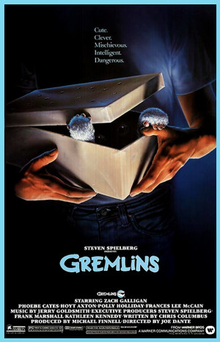
Gremlins is a 1984 American comedy horror film directed by Joe Dante, written by Chris Columbus, and starring Zach Galligan, Phoebe Cates, Hoyt Axton, Polly Holliday, and Frances Lee McCain, with Howie Mandel providing the voice of Gizmo, the main mogwai character. It draws on legends of folkloric mischievous creatures that cause malfunctions—"gremlins"—in the British Royal Air Force going back to World War II. The story follows young man Billy Peltzer, who receives a strange creature as a pet, which then spawns other creatures that transform into aggressive, imp-like monsters that wreak havoc on Billy's town during Christmas Eve.

Short Cuts is a 1993 American comedy-drama film, directed by Robert Altman. Filmed from a screenplay by Altman and Frank Barhydt, it is inspired by nine short stories and a poem by Raymond Carver. The film has a Los Angeles setting, which is substituted for the Pacific Northwest backdrop of Carver's stories. Short Cuts traces the actions of 22 principal characters, both in parallel and at occasional loose points of connection. The role of chance and luck is central to the film, and many of the stories concern death and infidelity.
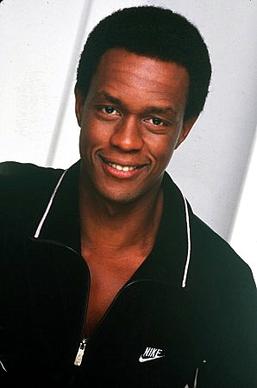
Kevin Peter Hall was an American actor. Hall stood 7 ft 2 in (2.18 m) tall, and frequently played monster characters during his career. He was the original title character in the science fiction Predator franchise, appearing in the first 1987 film and its 1990 sequel. Hall also portrayed the eponymous Harry in the fantasy comedy film Harry and the Hendersons (1987), a role he reprised for the first season of NBC's television adaptation (1990–1991). His human roles included Dr. Elvin "El" Lincoln on the NBC science fiction series Misfits of Science (1985–1986) and Warren Merriwether on the sitcom 227 (1989–1990).

The Land Before Time is a 1988 animated adventure film directed and produced by Don Bluth from a screenplay by Stu Krieger and a story by Judy Freudberg and Tony Geiss; it is executive produced by Steven Spielberg, George Lucas, Kathleen Kennedy, and Frank Marshall. The film stars the voices of Gabriel Damon, Candace Hutson, Judith Barsi, and Will Ryan with narration provided by Pat Hingle. It is the first film in The Land Before Time franchise.
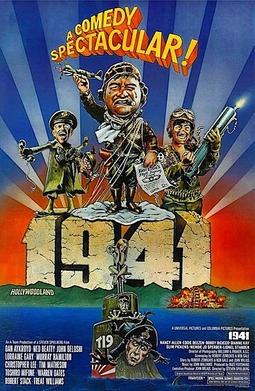
1941 is a 1979 American war comedy film directed by Steven Spielberg and written by Robert Zemeckis and Bob Gale. The film stars an ensemble cast including Dan Aykroyd, Ned Beatty, John Belushi, John Candy, Christopher Lee, Tim Matheson, Toshiro Mifune, Robert Stack, Nancy Allen, and Mickey Rourke in his film debut. The story involves a panic in the Los Angeles area after the December 1941 attack on Pearl Harbor.

The Money Pit is a 1986 American comedy film directed by Richard Benjamin and starring Tom Hanks and Shelley Long as a couple who attempt to renovate a recently purchased house. The film is a loose remake of the 1948 Cary Grant comedy film Mr. Blandings Builds His Dream House, and was filmed in New York City and Lattingtown, New York, and was co-executive produced by Steven Spielberg.
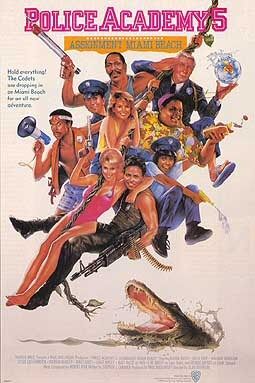
Police Academy 5: Assignment: Miami Beach is a 1988 American comedy film directed by Alan Myerson. It is the fifth installment in the Police Academy franchise, released on March 18, 1988. The film was given a PG rating for language and ribald humor.

Jon-Erik Beckjord was an American paranormal investigator, photographer, and cryptozoologist interested in UFOs, crop circles, the Loch Ness Monster, and Bigfoot. Throughout his life, he owned three separate, small-scale museums that featured displays, mostly photographs, of alleged UFO, Nessie, and Bigfoot sightings. He made guest appearances on national radio and television shows, but was criticized by skeptics and fellow cryptozoologists alike for not providing substantive evidence to back up his claims of the existence of paranormal beings.
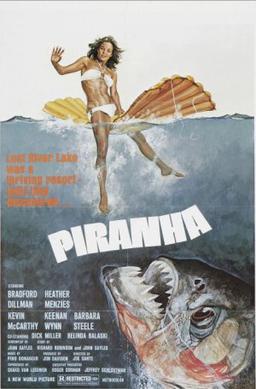
Piranha is a 1978 American horror film directed and co-edited by Joe Dante from a screenplay by John Sayles, based on a story by Richard Robinson and Sayles. The film stars Bradford Dillman, Heather Menzies, Kevin McCarthy, Keenan Wynn, Barbara Steele and Dick Miller. It tells the story of a river being infested by lethal, genetically altered piranha, threatening the lives of the local inhabitants and the visitors to a nearby summer resort.
Bigfoot is an alleged human-like creature of North American folklore.

Leviathan is a 1989 science fiction horror film directed by George P. Cosmatos and written by David Webb Peoples and Jeb Stuart. An international co-production of the United States and Italy, it stars Peter Weller, Richard Crenna, Ernie Hudson, Amanda Pays and Daniel Stern as the crew of an underwater geological facility stalked and killed by a hideous mutant creature. Its creature effects were designed by Academy Award-winning special effects artist Stan Winston.
René Dahinden was a Canadian Bigfoot (Sasquatch) researcher. Dahinden was born in Switzerland and moved to Canada in October 1953, where he would live for the rest of his life. He became interested in the Bigfoot phenomenon shortly after arriving in Canada, and during the next few decades he conducted many field investigations and interviews throughout the Pacific Northwest. Dahinden was a major advocate for the controversial Patterson–Gimlin film, which was shot in 1967 and supposedly provides photographic evidence of Bigfoot. With Don Hunter, he co-wrote the book Sasquatch, which was published in 1973 in a hardcover edition. In 1975, the book would be issued as a paperback. This title would then be revised and renamed in 1993 as Sasquatch/Bigfoot: The Search for North America's Incredible Creature, Revised Edition.
William Dear is a Canadian actor, director, producer and screenwriter. He is known for directing the films Harry and the Hendersons, If Looks Could Kill, Angels in the Outfield, Wild America, and Santa Who?.

Harry and the Hendersons is an American sitcom based on the film of the same name, produced by Amblin Television for Universal Television. It aired in syndication from January 13, 1991, to June 18, 1993, with 72 half-hour episodes produced. It is about a family who adopts a Bigfoot called Harry.
Bigfoot is an alleged human or ape-like cryptid in North America. Since the mid-20th century, Bigfoot has become increasingly relevant in popular culture and is the subject of film, television, advertising, music, literature and more.
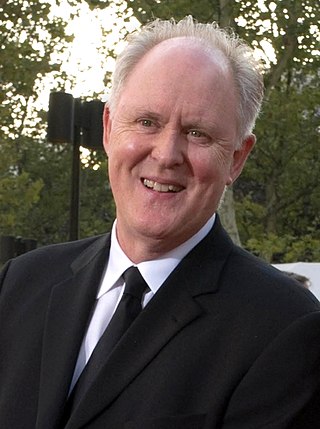
John Arthur Lithgow is an American actor. He studied at Harvard University and the London Academy of Music and Dramatic Art before becoming known for his diverse work on stage and screen. He has received numerous accolades including six Emmy Awards, two Golden Globe Awards, and two Tony Awards as well as nominations for two Academy Awards, a BAFTA Award, and four Grammy Awards. Lithgow has received a star on the Hollywood Walk of Fame in 2001 and was inducted into the American Theater Hall of Fame in 2005.

The Capture of Bigfoot is a 1979 horror film from Bill Rebane, the director of Monster A-Go-Go. Produced and originally released by Studio Film Corp, the film was re-released in 2010 by Troma Entertainment.
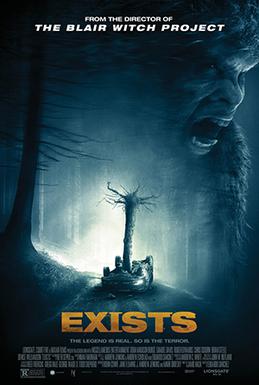
Exists is a 2014 American found footage monster horror film, directed by Eduardo Sánchez. The film had its world premiere on March 7, 2014 at South by Southwest and stars Chris Osborn and Samuel Davis. The story revolves around a group of friends hunted by something in the woods of East Texas. Following the darker psychological tone of Sánchez's previous film Lovely Molly, the film returns to the creature-feature horror of Altered, also written by Jamie Nash.
















